Related Research Articles

De Stijl, incorporating the ideas of Neoplasticism, was a Dutch art movement founded in 1917 in Leiden, consisting of artists and architects. The term De Stijl is also used to refer to a body of work from 1917 to 1931 created in the Netherlands. Proponents of De Stijl advocated pure abstraction and universality by a reduction to the essentials of form and colour. They simplified visual compositions to vertical and horizontal, using only black, white and primary colors.
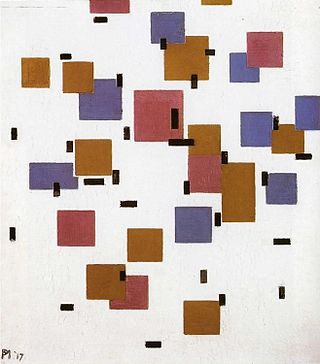
Neoplasticism, originating from the Dutch Nieuwe Beelding, is an avant-garde art theory proposed by Piet Mondrian in 1917 and initially employed by the Dutch De Stijl art movement. The most notable proponents of this theory were the painters Mondrian and Theo van Doesburg. Neoplasticism advocated for a purified abstract art, by applying a set of elementary art principles. Thus, a painting that adhered to neoplastic art theory would typically consist of a balanced composition of simple geometric shapes, right-angled relationships and primary colors.

Cornelis Arie "Kees" Verkerk is a former speed skater from the Netherlands.

The Rijksakademie van beeldende kunsten was founded in 1870 in Amsterdam. It is a classical academy, a place where philosophers, academics and artists meet to test and exchange ideas and knowledge. The school supports visual artists with a two-year curriculum.
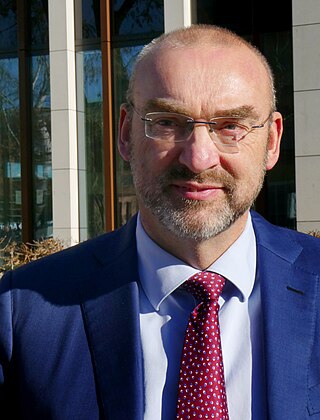
Roelof (Roel) Kuiper is a Dutch historian, philosopher, ideologue, politician and university professor. He was from 2007 to 2019 a member of the Dutch Senate, and is professor of Reformational philosophy at the Erasmus Universiteit Rotterdam in the name of the Association for Reformational philosophy, teaching Society Issues at the Christelijke Hogeschool Ede and Gereformeerde Hogeschool Zwolle and Political and social philosophy at the Vrije Universiteit Amsterdam (VU).

Carolus Petrus Eduardus Maria "Karel" van de Woestijne was a Flemish writer and brother of the painter Gustave van de Woestijne. He went to highschool at the Koninklijk Athenaeum at the Ottogracht in Ghent. He also studied Germanic philology at the University of Ghent, where he came into contact with French symbolism. He lived at Sint-Martens-Latem from April 1900 up to January 1904, and from April 1905 up to November 1906. Here he wrote Laetemsche brieven over de lente, for his friend Adolf Herckenrath (1901). In 1907 he moved to Brussels, and in 1915 he moved to Pamel, where he wrote De leemen torens together with Herman Teirlinck.

Jan Pieter Veth was a Dutch painter, poet, art critic and university lecturer. He is especially noted as a portrait painter. Amongst his sitters were Max Liebermann, Lambertus Zijl, Frank van der Goes, Antoon Derkinderen and other contemporaries including various fellow painters.

Gerrit Mannoury was a Dutch philosopher and mathematician, professor at the University of Amsterdam and communist, known as the central figure in the signific circle, a Dutch counterpart of the Vienna circle.

Gerard Caris is a Dutch sculptor and artist who has pursued a single motif throughout the course of his artistic career, the pentagon.
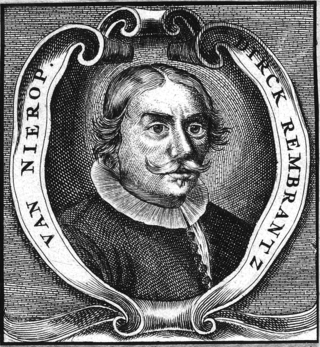
Dirck Rembrantsz van Nierop was a seventeenth-century Dutch cartographer, mathematician, surveyor, astronomer, shoemaker and Mennonite teacher.
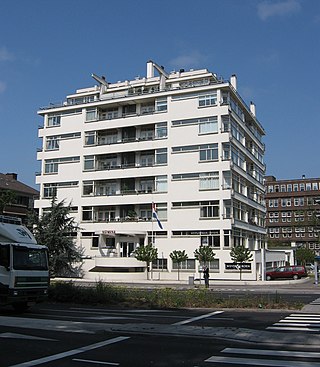
Nieuwe Zakelijkheid, translated as New Objectivity or New Pragmatism, is a Dutch period of modernist architecture that started in the 1920s and continued into the 1930s. The term is also used to denote a (brief) period in art and literature. Related to and descended from the German movement Neue Sachlichkeit, Nieuwe Zakelijkheid is characterized by angular shapes and designs that are generally free of ornamentation and decoration. The architecture is based on functional considerations and often includes open layouts that allow spaces to be used with flexibility. Sliding doors were included in some of the designs.
Peter van Mensch is a Dutch scholar in the field of museology, and previously a professor of Cultural Heritage at Amsterdam University of the Arts.
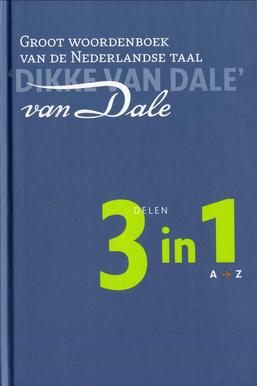
Van Dale Great Dictionary of the Dutch Language, called Dikke Van Dale for short, is the leading dictionary of the Dutch language. The latest edition was published in April 2022.

Julius Wolff was a Dutch-Jewish mathematician, known for the Denjoy–Wolff theorem and for his boundary version of the Schwarz lemma. With his family he was arrested in Utrecht by the Nazi occupation forces of the Netherlands on 8 March 1943 and transported to the Bergen-Belsen concentration camp on 13 September 1944, where he died of epidemic typhus on 8 February 1945, shortly before the camp was liberated.

Het Nieuwe Huis is an 'American style' apartment building with a gatehouse at the Roelof Hartplein, at the head of the Van Baerlestraat in Amsterdam Oud-Zuid within five minutes walking from the museums precinct. The building is, since 2004, on the country's monument list.

Frederik Willem Grosheide was a Dutch New Testament scholar. He served as Professor of New Testament at the Vrije Universiteit Amsterdam. He served as rector magnificus of that institution three times.

Martine Theodora Bax is a Dutch-Canadian art historian and art critic in modern art. Her specializations are the work of Piet Mondrian and the relationship between art and Western Esotericism, especially Modern Theosophy and Anthroposophy.

Karel Petrus Cornelis de Bazel was a modern Dutch architect, engraver, draftsman, furniture designer, carpet designer, glass artist and bookbinding designer. He was the teacher of Adriaan Frederik van der Weij and the first chairman of the Bond van Nederlandse Architecten, beginning in 1909.

Antonius Johannes (Antoon) Derkinderen was a Dutch painter, Glass artist, Draftsman and designer of book covers.
Gerrit van Dijk was a Dutch professor of mathematics and physics. In 2004 he was appointed an Officer of the Order of Orange-Nassau.
References
- 1 2 3 4 5 6 "Schoenmaekers, Mathieu Hubertus Josephus (1875-1944)". Huygens Institut. Retrieved 28 July 2024.
- ↑ Schoenmaekers, M.H.J. (1911). Christosophie: de eeredienst van de taal. Amsterdam Meulenhoff. Retrieved 29 July 2024.
- 1 2 3 Schoenmaekers, M. H. J. (1915). The New Worldview. Internet Archive: Bussum, C.A.J. van Dischoeck.
- ↑ Schoenmaekers, M.H.J. (1915). Het Nieuwe Wereldbeeld. Internet Archive: Bussum, C.A.J. van Dishoeck.
- ↑ Schoenmaekers, M.H.J. (1916). Beginselen der beeldende wiskunde. Internet Archive: Bussum, C.A.J. van Dishoeck.
- ↑ Schoenmaekers, M.H.J. (1916). Principles of Visual Mathematics. Internet Archive: Bussum C.A.J. van Dischoeck.
- ↑ Mondrian, Piet (1937). "Plastic Art and Pure Plastic Art (Figurative Art and Non-Figurative Art)". Faber and Faber. pp. 41–56.
- ↑ Overy, Paul (1991). De Stijl. Internet Archive: Thames and Hudson. pp. 41–42.